5 Steps to Create an Authentic Brand
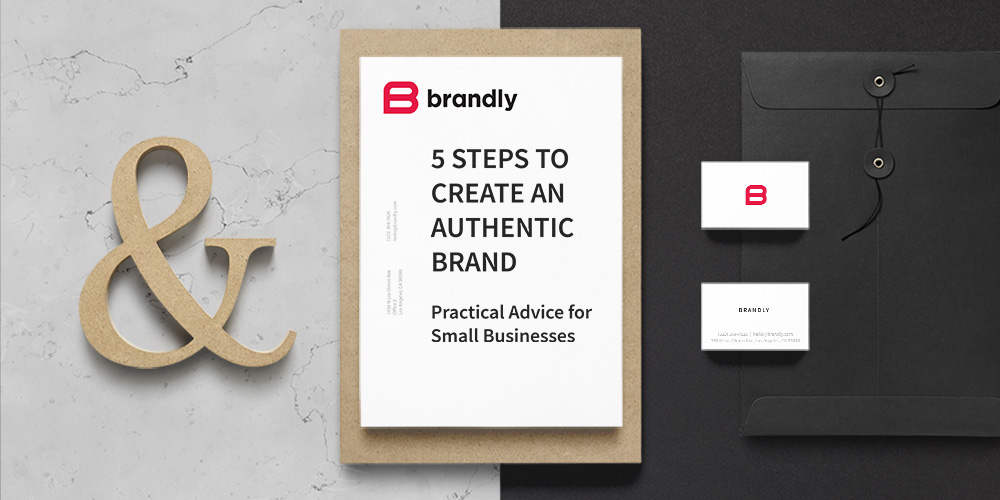
- Create your brand story
- Define your target audience and create customer personas
- Create the visual identity for your brand and create a brand style guide
- Empower employees to be your brand ambassadors
- Create business cards that will make an impression on your customers
As we know, running a successful small business isn’t easy. Having a clear focus and the ability to prioritize action is what separates successful businesses from the competition.
Why should we focus on Branding for our small business?
Branding is the foundation of your business - whether you realize it or not, it’s the reason why the business exists. If your employees and customers are clear about why your brand exists and what value it contributes to its customers, you will have a much easier time acquiring and retaining customers.
“ A charismatic brand is one for which people believe there’s no substitute.”
WHY?
- When a company’s brand is strong in the marketplace, customers feel a high degree of trust when they make the choice to do business with you.
- Past customers who have a positive affinity for your brand will feel confident that you will continue to deliver value to them with your products and services.
- If you continually reinforce your brand with your customers, it’s more likely your past customers will do business with you rather than your competition.
- Customers can become your best brand ambassadors by spreading the word of your company to anyone who will listen. When this happens, companies often see sustained growth since customers can act as a multiplier for your sales efforts.
Let’s take a look at the brand for Apple Inc.
Once someone is an iPhone user, they keep purchasing iPhones rather than making a switch to an Android phone. A study published by Morgan Stanley in 2017 shows a whopping 92% retention rate for Apple iPhone users.
The same study has the following retention rates for Apple’s mobile phone competitors:
- Samsung - 77% retention rate
- LG - 59% retention rate
- Motorola - 56% retention rate
It’s clear that iPhone users not only trust Apple to make a great phone, they don’t even consider the competition. If they did consider switching to another company for their mobile phone, the retention rate would be much lower since it’s clear that Samsung makes great mobile phones.
Apple’s brand is one of the strongest in the world. They set the standard and are 100% committed to expressing their brand in everything they do. We realize Apple is the biggest company in the world with one of the strongest brands and it’s not likely that your company has the resources to invest in your brand like Apple. Businesses often lose sight of the importance of expressing the value of their brand to their audience. Follow the lead set by Apple by consistently speaking to the value of your brand.
There is one more key reason to focus on expressing your brand within your company and to your audience. It creates a clear focus for everyone when important decisions hang in the balance.
This is Nike’s mission:
“To bring inspiration and innovation to every athlete in the world.“
Whenever Nike has a key decision to make about design, production, operations, they ask themselves a question. Will this decision bring us closer or farther away to our mission of bringing inspiration and innovation to every athlete in the world?
Being 100% committed to your brand is why Apple makes the inside of their products just as beautiful as the outside - not many people will see or understand how beautifully constructed the inside of an Apple computer is. Apple cares not only about what 99% of what their customers will see, but they also want the few that look under the hood to be equally impressed. Apple doesn’t settle for products that don’t meet the most rigorous quality standards. They can be proud of the craftsmanship of every last detail of their products which not only makes better products, it makes employees proud of the company they work for.
STEP 1: Create Your Brand Story
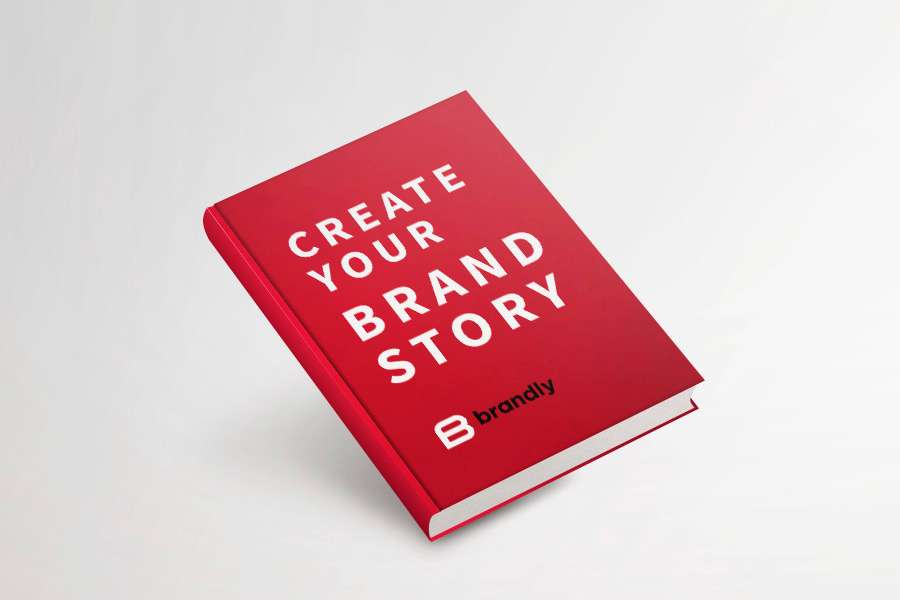
WHY DOES YOUR BRAND EXIST?
Have you read the book Start With Why by Simon Sinek? If not you should pick up a copy. It speaks directly to how important it is for companies to understand ‘Why’ they are in business. It’s not enough to have a product with cool functionality because all functionality will be commoditized if it’s popular enough with consumers. You need to have a reason ‘Why’ you’re in business and this ‘Why’ needs to be bigger than the bells and whistles of your project.
Your ‘Why’ could be organized around innovation like Nike. You’re always looking for the next big innovation that can deliver tremendous value to your customers.
Also, think about the values that are at the heart of your brand. For example, is your ‘Why’ about empowering your customers? Is this what gets you and your team excited about going to work every day? If so the ‘What’ can be anything as long as your products and services are empowering your customer.
You are not a company that builds widgets with x number of features, you’re a company that empowers your customers. The products and services today happen to be ‘x’, ‘y’, and ‘z’ but tomorrow they could be something completely different. The thing that won’t change is your brand story.
You are empowering your customer.
Define your brand story. Have fun with it. When you have key decisions you need to make, always refer back to your brand story. Does this new product, service, potential employee, headquarter move, etc., support our brand story?
WRITE A MISSION STATEMENT
State what your company has set out to accomplish.
Your brand story is about ‘Why’ your company is in business. Your mission is stating what your company is trying to achieve or the ‘What’ - Notice the placement of the ‘Why’ and the ‘What’ in the 5 W’s. Start with ‘Why’ and then go to the ‘What.’
- Why
- What
- Where
- When
- Who
Let’s look at one of the worlds largest retailers in the world, Amazon, uses for their Mission Statement:
“To be Earth’s most customer-centric company where people can find and discover anything they want to buy online.”
Notice how this mission statement isn’t about ‘Why’ they are in business. They have a separate brand story for the ‘Why.’ Their mission statement clearly states ‘What’ they are trying to accomplish. It’s brash and big, but so is the name of their company – Amazon is the biggest river in the world so it makes complete sense that they want to be the most customer-centric company on earth where people can find and discover anything they want to buy online. It’s a very specific mission that also is broad enough to encompass the entire planet and anything that can be sold online.
What mark do you want to make on the world? Write a mission statement that clearly states ‘What’ your company is setting out to accomplish.
STEP 2: Define Your Target Audience and Create Customer Personas
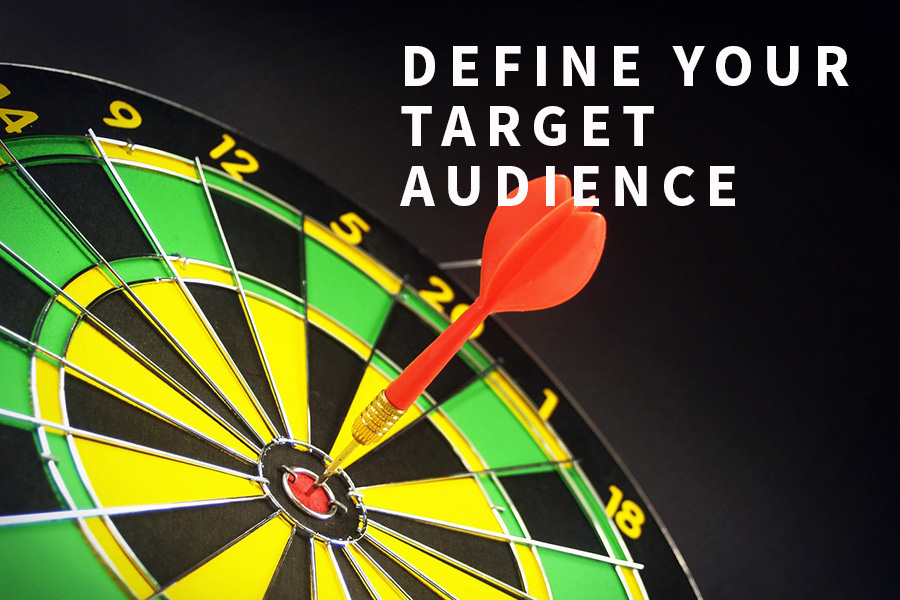
Let’s face it - it’s likely your brand isn’t for everyone. Even a company as big as Amazon has a limited audience. You need to be an online consumer to be in their audience. Now we realize having an audience that only needs to be online is a very big net to cast but it’s not 100% of all people.
Some companies operate in tight niches with a very small targeted audience and have very profitable businesses. These companies have defined ‘What’ they’re trying to accomplish in their niche, defined their target audience, and know how to leverage their brand story to speak to their audience by explaining ‘Why’ these prospects and customers would benefit from working with them.
It’s paramount to define your target audience.
KNOWING YOUR AUDIENCE WILL HELP YOU:
- Define the tone of your marketing and advertising copy
- Create merchandise and marketing materials that resonate with your customers
- How your customer support team speaks with customers
- Your pricing model
- Your customer acquisition strategy
- The tactics you will employ to reach your goals
- Your marketing and advertising campaigns
You don’t want to waste resources talking to anyone who isn’t your customer. Instead, you want to speak directly to your customer or people who will become your customer after listening to your brand story. You speak the language of your customer and they will hear your message. If they’re not customers today, they could be tomorrow. If and when that day comes, they will hear the same message your target audience hears.
HOW DO YOU DEFINE YOUR TARGET AUDIENCE?
The best way to figure out your target audience is to listen to your current customers. What are they saying, how old are they, do they have kids? If so, how old are the kids? Is it important for your customers to have kids? Does owning a home matter with your product or services?
Gather all of the data about specific attributes of your customers and use this data to build customer personas. What are customer personas? You create multiple customer profiles for the different types of customers you have. Below is an example of one customer persona you could create for your company.
PERSONA X
Target Audience Statement
- Statement: Anything that helps me learn more about myself, makes me feel empowered and gets me excited.
Basics
- Name: Susan the Seeker
- Gender: Female
- Occupation: Psychologist
- Age: 30-55
Emotion
- The reason they shop for us: Looking for self-improvement product or services
- Motivation: If your products and services can speak about how she can improve some important aspect of her life, you’ll likely have a potential customer.
- Price Sensitivity: Low - will spend money on products and services that have value
- Risk Tolerance: Medium
- External Influences: Doesn’t purchase without doing some research but won’t take the time to create a pros and cons list before making a purchasing decision
- Brand Loyalty: High
- Target outcome that will make them feel good about their choice: They delivered on their promise. The product I bought was exactly as advertised and brought tremendous value to me.
Messaging for this Persona
- Customer Journey: Consideration Stage
- The primary platform for messaging: Facebook Video Advertising, Instagram, YouTube
- Messaging Opportunity: The videos need to speak directly to the benefits she would receive and why our company not only delivers a valuable product but that we’re a company that gives back to our community.
Once you have a handful of customer personas, make sure all of your marketing and advertising materials speak directly to these personas. You’ll also confirm your sales and customer support staff understand the personas of who they’re speaking with. Ideally, you’re using past customer data to build out your customer personas so it’s likely they will be an accurate summation of your target audience but you always want to test all of the personas to be sure they’re speaking to the customers that are the best fit for your business.
A change here and a change there over time can always help refine the personas to make them relevant to the ever-changing customer landscape.
STEP 3: Create the Visual Identity for Your Brand and Create a Brand Style Guide

Your visual identity will represent your brand story, mission statement, and your target audience. A person in your target audience should get a sense visually of who you are as a company by seeing your visual identity. Don’t confuse your visual identity as your brand - it is not your brand. You’ve defined your brand by uncovering the meaning of ‘why’ you’re in business by writing your brand story and ‘what’ you’re trying to accomplish by writing your mission statement.
Seth Godin says it best:
“Ask a few people to name a logo they like. With very few exceptions, people will choose a logo that’s associated with a brand they admire. That’s because what makes a good logo is a good brand, not the other way around.”
If possible you’ll want to hire a branding professional or at minimum a graphic designer who can interpret your brand story, mission statement, and target audience into a visual brand. Branding professionals specialize not only in the visual identity but also the entire process we’re describing in this guide.
If your company can’t afford a branding professional or a graphic designer to create a logo, focus on typography first. Having a logo isn’t the most important element of your visual identity. With typography alone, you can establish your brand story and the value of what you have to offer the marketplace.
Make sure to avoid these brand mistakes >
Here are the 4 things that will help you figure out what your brand will look like:
- Mood Board
- Typography
- Colors
- Imagery
MOOD BOARD
A mood board is a brainstorming tool for what colors, imagery, typography, and verbiage represents your brand. This is the time to be creative and not limit yourself. Leave the negative and judgmental minds at the door - they are not allowed to participate in this exercise. Allowing yourself to utilize big picture thinking will give you a great start on honing in on what your visual identity will end up being. Pinterest is a great way to create a digital mood board or just grab a big piece of construction page, a stack of magazines, scissors, a glue stick and start brainstorming what your brand should look like.
TYPOGRAPHY
The world of fonts is dizzying. There are thousands of fonts to choose from - where do you start? You can download Google fonts for free. There are websites that show you which font combinations work well. The font should feel like the values that your brand represents. Does using your product or services give people security? If so, consider solid typography that looks as if you can stack weight on top of it. What if your brand is whimsical and fun? Your typography should follow. Think of fonts and typography as the outfit your brand wears.
COLORS
Similar to fonts, colors should also be part of your brand’s outfit. Sleek or formal brands often use black as a primary color. What if your product or service focuses on protecting the environment? Should you use green or a color that represents the natural world? Choose a set of colors that fit into your brand story and mission. This is also an area a brand professional can help since they’ll know how to convert your values, meaning and purpose into a set of complementary colors.
IMAGERY
Less established brands can make use of too much stock imagery in their marketing and advertising materials. Stock imagery isn’t bad per se, it all depends on how you use it and how often. Ideally stock won’t feel like a stock image, instead, it will seem that a professional photo shoot was done to capture the imagery for your specific brand story. Whenever possible, you’ll want to stage product or service photos and video since the authenticity of your imagery will be noticed by your audience. Take a moment to think about brands that have the best imagery—most of the time, the imagery or video is made custom for the brand and not a stock image or video.
There is more to think about with imagery. For example, do you want actual people to be in your imagery most of the time? If so, are there situations where omitting people are allowed? What about backgrounds - do you want dark, light or muted backgrounds for your imagery?
BRAND STYLE GUIDE
Now that you’ve put so much work into defining your visual identity, you need a brand style guide. A brand style guide outlines the visual guidelines for your brand in an official document. It will show the specific logos, fonts, colors, display banner ads and more that can be used in marketing and advertising materials. The brand style guide will not only assist any provider that works with your company to use the correct, typography, colors, images, logo, advertisements , etc., it will also help you police your brand if anything is made that isn’t compliant with the guide.
Without a style guide, it will be nearly impossible to control how your company is visually representing your brand since employees, vendors, and contractors will begin to take creative liberties with your visual identity. Before long, the visual identity and brand you created won’t be represented in your marketing and advertising materials and as a result, your brand will be confused in the eyes of the consumer. We highly encourage that you create a brand style guide even if it’s the bare essentials to start. It’s a good habit to get into as your brand grows. Your brand style guide can continue to evolve as your brand evolves.
STEP 4: Empower Employees To Be Your Brand Ambassadors
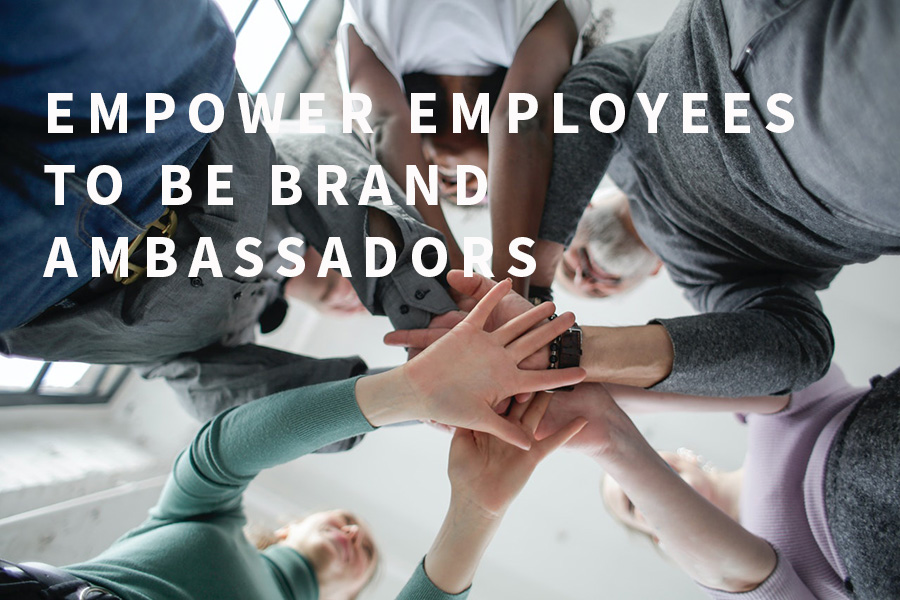
It’s important to be sure that your employees, strategic partners, vendors, and contractors all know the value you bring to the marketplace. If you had all of your people complete a survey about your company’s brand, would they get it right? Be sure that your company’s brand story is clearly communicated to everyone who works for you. If they understand the true value that your company brings to the market, they’re more likely to be your own army of brand ambassadors - spreading the word to anyone who will listen that your company is the best choice for their needs. Think about the exponential growth that you can receive just by having your people be your brand ambassadors especially with social media in the palm of everyone’s hand.
AMPLIFY YOUR BRAND CONSISTENTLY WITH ALL OF YOUR MARKETING CAMPAIGNS
Your brand needs to consistently repeat the same message over and over and over again. Yes, you need to be creative with how you communicate your marketing and advertising to your audience but you should always consistently communicate the value of your brand. Consistency wins over time. In order to be successful in marketing and advertising, you need to saturate your prospects and customers with the same value propositions. They need to hear this message many times in order for it to click.
Think about how many times you have heard or seen an advertisement in the past before one day it actually clicked with what the product or service actually is. Marketing and Advertising should be 100% about communicating your value to your audience. You can use a discount or promotion, or the number of years you’ve been in business but you should always be consistently communicating the value of your brand with all of your marketing and advertising. One message with many different faces. If the messaging on your website matches your brick and mortar stores which also matches your Facebook Ads, Display Ads, Google Ads, and Radio ads, it’s likely that you’re investing in one message that your prospects and customers will hear over and over again.
If you do a good job of communicating the value of your brand, your prospects and customers will hear your message and feel better about working with you. Consistently express the value of your brand with your marketing campaigns and your prospects and customers will be able to distinguish the signal from the noise.
STEP 5: Create Business Cards That Will Make an Impression on Your Customers
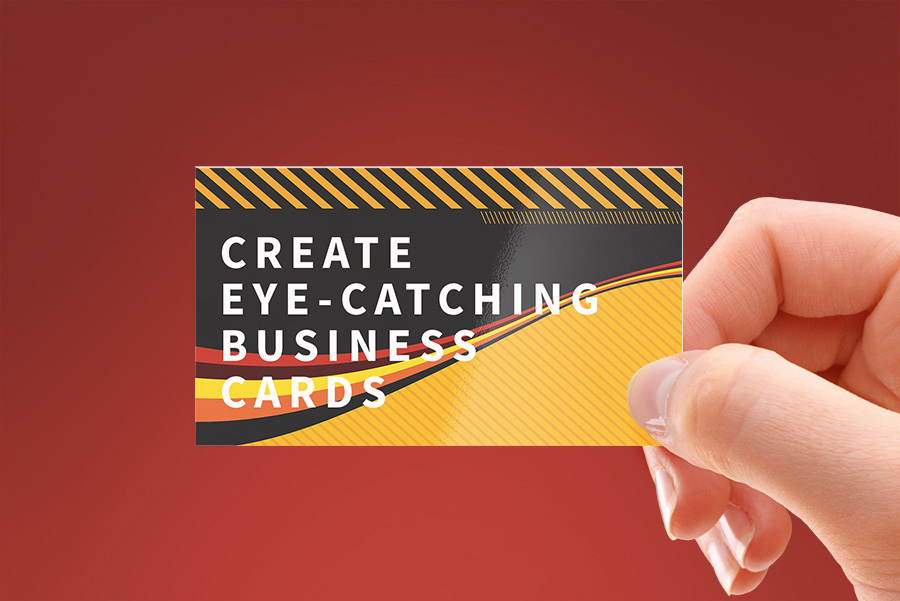
You may be thinking, why should I give my contacts a business card when they can find me on LinkedIn? Don’t miss a golden opportunity to make your first impression on a prospect, customer, or partner by giving them a business card that represents the visual identity of your brand.
Business cards are personal. It’s material in nature and will stick around their personal space more than a LinkedIn contact. Plus, once someone has your business card they can easily find you on LinkedIn, email, or give you a call.
A business card is the quickest and most efficient way to communicate what your company thinks of itself.
We believe the visual identity that companies display should be compelling. You should feel something when you look at a business card design - it should help your prospects and customers understand what you’re about.
For instance, do you have a brand story that’s about connecting people with the right communities? Sure you sell ‘x’ products and services but maybe the real value your company is selling is the connection with other people. If so you can tell that story on a business card which has the potential to make a lasting impression.
There is one other benefit to handing a prospect, partner, or customer a business card. It shows that you are prepared, organized, willing to connect, proactive, and that it’s likely you understand the value your company delivers since a tagline that speaks to your company’s value is most likely printed on the card.
There are many different ways to print cards these days. You can print cards with superior paper, UV coating, many different thickness options and even print a card with three pieces of paper glued together. There are so many different ways to represent your company’s visual identity with a business card.
Ready to start ordering business cards in a dead simple 3-step process?\ Get a free ordering portal + free shipping by ordering at Brandly.
We hope you enjoyed reading our guide. Establishing your brand can be a rewarding process - one that will help you find your way when times are tough and leave you feeling proud when your business is thriving. We wish you the best of luck on your journey to create your authentic brand!